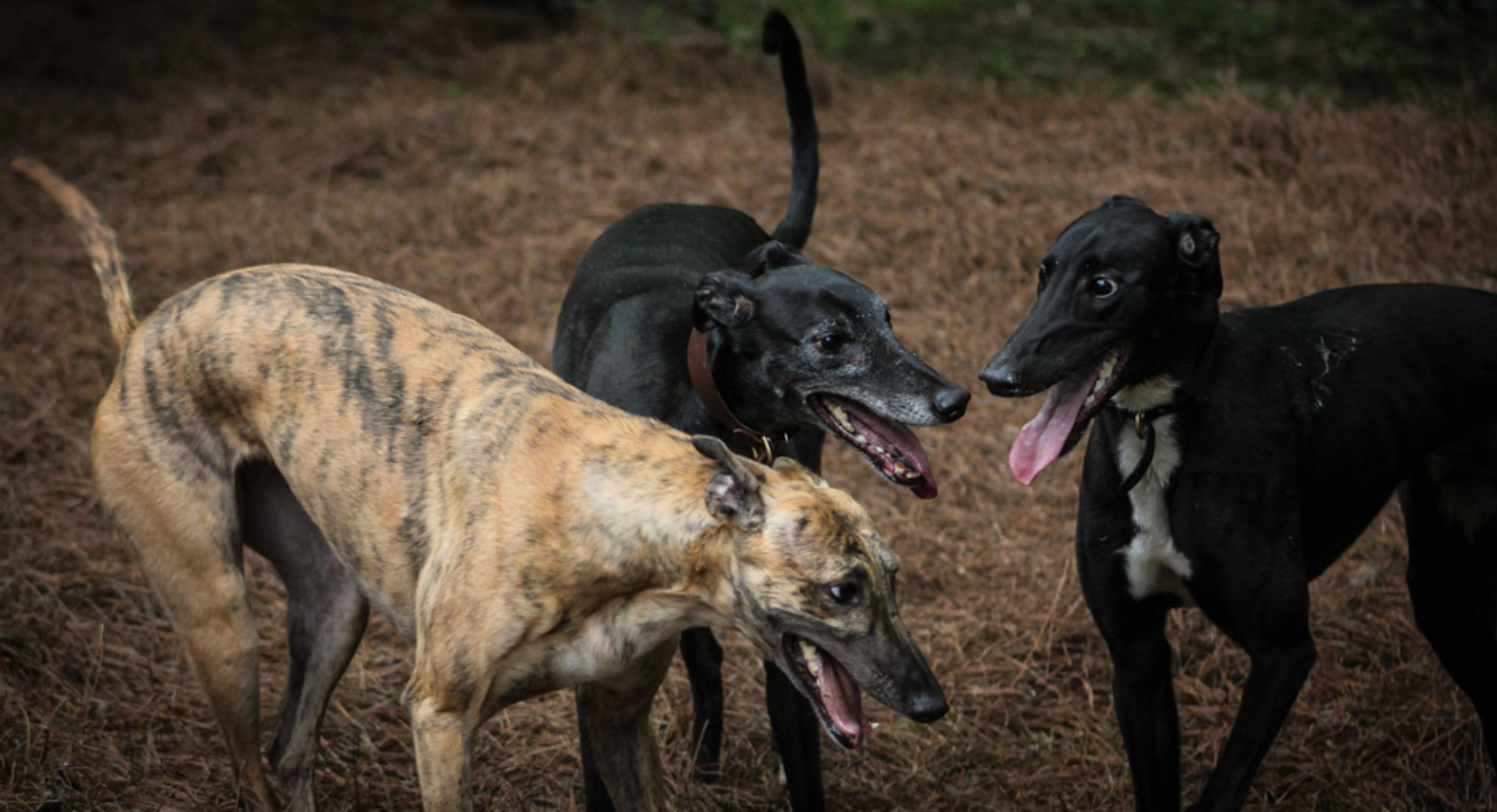Blogging can be a challenge. I get bloggers block and have trouble coming up with interesting Greyhound topics when this happens I turn to my husband for inspiration. He suggested a chronicle of a day in the country lure coursing. I thought that he was onto something. I hope that you all enjoy this post and folks who haven’t been to the field decide to come out for a day of fun in the country.
Lure coursing is a weekend event. On Friday night I begin packing the van. I feel more organized this way. To aid me in my OCD organization I bought plastic bins that are organized with first aid supplies, leashes, blankets, and other lure coursing accouterments. I have crates for all the Greyhound set up in my car. I have learned my lesson about having loose Greyhounds in the car after Jethro locked me out of the car and jumped out through the sunroof!
I leave my house with plenty of time to get to the field. I generally pick up breakfast as oftentimes I am very busy at the trial and have a hard time bringing myself to eat.
The trial begins with inspection and check-in usually around 9AM. At large trials like the International Invitational, inspection can start before the sun is up! This is when the inspection committee watches your Greyhound’s gait and checks for lameness. They also check the bitches to make sure that they are not in season.

After inspection, the field secretary completes the “draw” or the running order of the hounds. This is a blinded draw of the coursing hounds with a separate draw for each stake, open, field champions, and veterans.
While the draw is going on I usually walk my hounds. It is important to let your hound poop and pee prior to running—just ask Sashi – when nature calls, it calls. I also like to stretch the hounds and warm them up, and the walk helps with this.
After the draw is posted the trial begins to get underway. I take a photo of the running order because I will forget—it is not fun to be at the line in the wrong blanket! I then head back to the van to get the hounds ready for their run. If the hounds are running on continuous loop I will wrap vetrap around the Greyhounds’ legs up to their stopper pad to prevent line burn. Also, if the ground is hard and dry I will tape their pads with elastikon to prevent a blown pad. When it is our turn I head to the line with my hounds in a slip lead and regular lead. I get in position, holding the slip lead with my right hand and place my left hand under the Greyhound’s tuck. Some people do not like to hold a Greyhound under the tuck but I find that it gives me more control of the dog. The lure starts to move and the Greyhounds lose their minds! The hounds are not released until the hunt-master says “Tally-Ho” when the lure is far enough in front of the dogs.

I let the Greyhound go as soon as I hear “Tally-Ho.” Then I get to watch my most favorite thing: a big beautiful Greyhound doing what they are best at, chasing.
The Greyhounds are moving so fast it seems that the entire course only lasts seconds.
Once the Greyhounds are back at the line, I grab mine and hurry back to my van to remove any tape or vetrap and check them for any lameness or tenderness. Once the vetrap is removed I use a pressurized sprayer with water to rinse out their nail beds. When dogs run on turf they can get a build-up of debris in their nail beds. This can be painful and a potential cause for infection. If there is a little blood in the nail bed, that is okay and it should be cleaned with the sprayer. I do not give water at this time. After they appear to be sound I walk them until their breathing becomes more normal and they are able to close their mouths. Then give them a small amount of water.

After all the dogs have ran in prelims the entire process is repeated, generally after lunch, which gives a nice break for the hounds. Once all dogs have run twice, the top hounds will run for best of breed. After best of breed is completed, all the breed winners are able to run for best in field.
Once all the running has been completed, awards are given out and photos of the winners are taken. Most often the placing dogs will get a toy (my hounds are very pleased with this).
After socializing with friends and some photos, we pack it up, head home, ready to repeat the following day.









